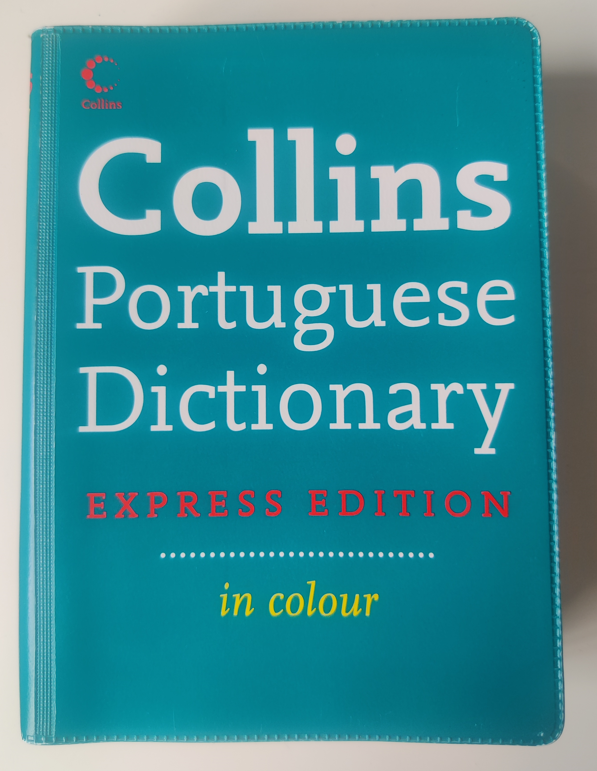Last week, I purchased a Collins bilingual Portuguese/English dictionary from a charity shop. Buying a physical dictionary felt a bit like going back in time to when I was at school in the 1990s. Until now, I’ve been using Google Translate to translate words and phrases from Portuguese into English.

I’ve used bilingual dictionaries in the past, but not spent the time to understand the meaning of much of the detail that goes with the translation. Until purchasing my dictionary, I’d never read the section at the front, which explains how it works, including how a dictionary can help with pronunciation and understanding grammatical gender.
To understand pronunciation, dictionaries use the symbols of the International Phonetic Alphabet (IPA), which was developed by the International Phonetic Association in the late 19th century (more details about this can be found here). Genders are indicated with m for masculine and f for feminine.
Although bilingual dictionaries can differ, a good bilingual dictionary should provide details about grammar (e.g. if it is a noun or verb), different meanings of words (separated by semicolons) and common phrases to place the word in context.
Vocabulary related to using dictionaries in Brazilian Portuguese
| dictionary | o dicionário |
| grammar | a gramática |
| phrase | a frase |
| pronunciation | a pronúncia |
| translation | a tradução |
| word | a palavra |
Click here for free language resources, including pages detailing vocabulary and grammar.
